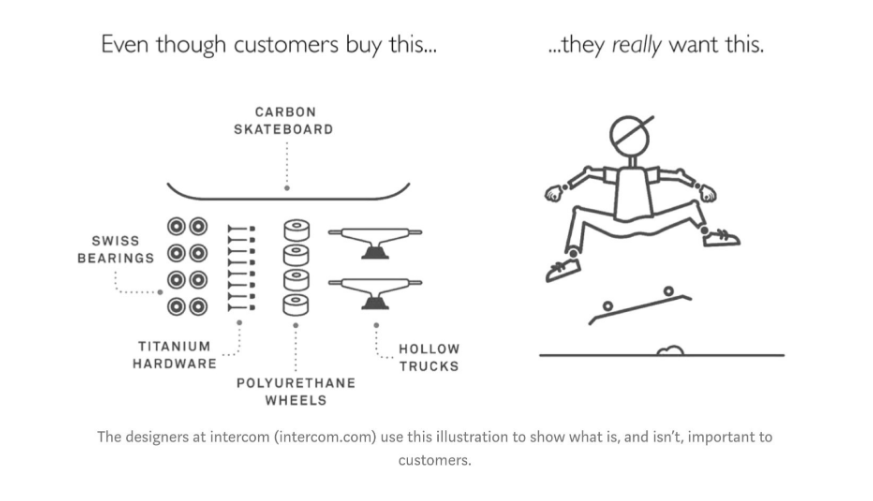By Shane Murphy-Reuter, Intercom SVP of Marketing
Most marketers I know struggle over the same competing messaging challenges: to what degree should we focus our messaging on the function of what our product can do, versus the emotion of how it makes me feel when I use it?

The benefits of both approaches are clear. We’re all human, so if brands can tap into a higher, more emotional meaning for us, we reward that with loyalty. Emotional marketing cuts through the noise and makes me care. However, emotional messaging can only get you so far. At some point, if you want someone to buy your $100k software, you need to convince them of the function of your product.
Most tech companies are founded by technical people who lean towards communicating the functional, and miss the emotional “why.” So how do you create campaigns that have both emotional and functional resonance? Is it magic? Is it just the spark of genius you can only buy by hiring an expensive creative agency? While creativity is required, it’s just one part of a process that’s not as “magical” as it may appear.
Below is a four-step process we use to develop campaigns at Intercom. I’ve included a fictional campaign concept we might run if we were to ever do a proper marketing campaign around our recently launched Product Tours (nb. This is just my personal idea, I’m sure a creative team could do much better 🙂 We also used this methodology in my last company, AdRoll, when we launched our ‘Dare to Grow’ campaign which had an immediate impact and helped return the company to double-digit growth.
Step 1: Identify both the emotional and functional customer insight
At Intercom, we are big proponents of the Jobs to be Done framework. This framework helps us identify the functional job that the customer is hiring us for, e.g. I hire a hammer to help me put up bookshelves, not to hit a nail.
For Product Tours, the job we are being hired for is to increase activation rate, which in turn increases customer stickiness. This is the functional insight we need in order to define our positioning for the product.
However, we also need to dig a bit deeper: why do product owners want to increase product adoption? For Product Tours, we know many of our customers are product managers or teams who have poured their blood sweat and tears into their products and they know that the landscape is littered with great products that failed because no one discovered them or they were too difficult to understand. This is a key insight we will leverage in step 3.
Step 2: Define both functional and emotional positioning based on our insights
Now that we have our key insight figured out, we’ll use this to define our positioning, or how we resolve the tension highlighted in the insight. For Product Tours, we functionally guide users through products to show them how to use it with pointer messages and videos that show people how to use the product while in your app. Emotionally, this means that Product Tours brings the genius of your product to life so that users understand the incredible power of what you’ve built.
Step 3: Develop a campaign concept
Here’s where creativity comes in– now you’re ready to come up with a creative concept that communicates both the functional and emotional positioning. For Product Tours, this could be something like “undiscovered geniuses” where you’d create an entire campaign around the emotional idea of not wanting to have your talent die in obscurity, like Van Gogh, Kafka, Thoreau. This touches on the emotion, but also immediately opens the door for the function of how Product Tours solves that problem.
Step 4: Create campaign activations that bring the concept to life
It’s time to bring this creative concept to market. Again, this is where most marketers drop the ball: they come up with a snappy creative concept and then just put it out through their existing channels. They put it in digital ads, redesign their event booth with the messaging, and update their website. That’s all well and good and you 100% should do that, but it misses the opportunity that a great creative concept gives you. How might you design bespoke marketing activities that in and of themselves bring the idea to life? In our Product Tours example, perhaps it means producing a podcast series interviewing founders of brilliant ideas that never took off because they went undiscovered. This is more than just putting words on an ad, it’s designing the actual marketing activity around the concept.
Functional messaging is fine if you already have someone’s attention, but emotional messaging can open up your brand and make people care to listen in the first place. Employ both and you’ll have a recipe for success.

